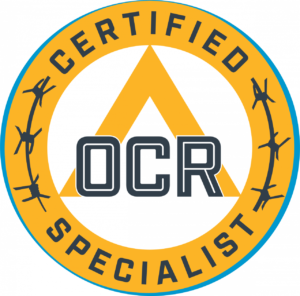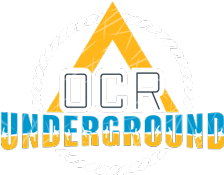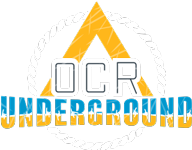Hopefully, if you are reading this article, you have realized how important running is to the sport of OCR. I know the sexy obstacles are the hanging, climbing, and carry challenges, but if you want to excel at this sport, being a better runner is probably the most effective way to do so.
So how do you become a better runner? Run more to start, but we can do way better than that. But if you aren’t running much as all, I think you know where to start. Build volume up. If you can’t run the distance of race you are training for without stopping, then that is your first goal. Don’t worry about anything else until you can run continuously for that distance. The except being if you are running an ultra distance. You can work on some other things while you are building up that volume. But let’s assume you are training for a typical race of 5-15k distance for this article.
There are many components of training we can focus on to become a faster and more efficient runner. For the purposes of this short post we are going to focus on efficiency, capacity, and threshold. If you understand these three components, you will know exactly what it takes to be a better runner.
Efficiency
The name of the game is efficiency. The more efficient you are the less energy you will waste and the longer and faster you will be able to run. There are two aspects of efficiency that we can focus on here.
Running Economy
First, we have running efficiency or running economy. This means that your running technique is dialed in so you are reducing the amount of energy you need to run. This comes with specific training and practice. The more you practice the better you get at a skill. The goal of running is to be able to recycle energy each step you take. We essentially use the elastic ability of our muscles and connective tissue to help create movement. If we rely on our muscles to do everything we will need more energy every step we take.
This is why plyometrics and specific running drills like POSE Method drills are so helpful. Plyometrics or jump training helps us utiliize this elastic ability and we learn to use it better during activities like running. This is why when you plyometrics they need to be fast, explosive, and bouncy. You body learns to transfer energy through the body better and creates efficient movement.
POSE Method is a running style that builds off of this with specific drills to become more efficient. The details of POSE go beyond this article, but here are a few drills that we might see to help improve running economy.
These are great prep drills to incorporate as part of your warm up before your runs. As you get better at these you will be able to incorporate these techniques into your normal running.
Fuel Efficiency
The second type of efficiency we are going for is fuel efficiency. The two main fuel types we use for generating energy to support our running is carbohydrates and fats. To simplify this, we use more fats during our lower intensity efforts and more carbs at our higher intensity efforts. Really we are using both fuel sources, but one will contribute more.
Carbs are a great fuel source because they supply energy quickly to support our higher intensity efforts. The problem is we have a smaller amount of stored carbs than fats, and when we use energy systems that break down carbs, there are other by products that will eventually interfere with our ability to run.
Fats on the other hand, we have a much higher supply of and can use for very long periods of time. They just aren’t the best at supporting higher intensity running.
Really we want a combination from both. But the longer you can use fat for fuel, the more efficient we are. This means we can hang on to our carbs for longer so we are better able to use them later in our runs or races when we need to pick up the pace and push harder.
Through diet and exercise we can influence how and for how long we utilize fats. This is where lower intensity aerobic training comes into play. Since fats are primarily used to support aerobic based training we have to spend time in that training zone. When you primarily do high intensity training you might be missing out on this important adaptation.
This is why, when you look at elite runners’ programs, you will see they spend a lot of time in these lower intensity workouts. It improves the body’s ability to utilize fats at higher intensities. So if you aren’t spending time with pure aerobic based training, this might be a great addition to your plan.
Capacity
The next key area to focus on is your aerobic capacity. This is like the size of your engine. If you have a bigger engine you have a higher potential to succeed at endurance based activity. We refer to this as your maximum oxygen consumption or VO2 max.
During training there is an increase demand for oxygen at the muscles. As intensity increases the demand goes up. It gets to a point that even if the demand is increasing, your body cannot take in anymore oxygen to support this. This would be your aerobic capacity. So if we can involve specific training that can increase your ability to consume more oxygen at higher intensities, you have more of an opportunity to be a better endurance runner.
So how do we increase VO2 max? There are two main ways we can do this. If you have not been consistently running, then I would refer back to the recommendation I gave earlier. First by increasing volume with lower intensity training you will be able to see an steady increase in VO2 max. After a few months of training this effect will eventually tap out and higher demands are needed.
In order to improve VO2 max we need to spend time at or slightly above your VO2 max intensity. This will vary person to person. You can do VO2 max testing to find out what this exact level would be for you, but this will be high intensity effort that last for a few minutes. Performing intervals at your maximum pace for 2-4 minute bursts is a good starting point to push your VO2 max.
You can’t do this type of training all the time so it is important to vary it with lower intensity training efforts.
Threshold
The final piece to our training puzzle involves your threshold. If VO2 max is your engine, threshold is your ability to redline your engine for longer.
As I mentioned earlier, when training at high intensities and utilizing carbohydrates for fuel, there are build up of by products that can interfere with muscle contraction. Lactate is one of these by products. In reality, lactate is not a problem and in fact is a source of energy for your muscle cells. But as lactate levels increase, we also see other things increase that do cause some problems, so lactate threshold is often referred to the point where we see this build up.
If we can increase your lactate threshold it means we can run at faster paces and see less of a metabolic disruption in the muscle cells. This means you can keep those paces up for longer and run faster times.
In order to increase our lactate threshold, we need to train at or slightly above this point. This is similar to what we said with VO2 max it just happens at a different level.
Lactate threshold tends to happen at more moderate to hard intensities so we are able to hold these paces for much longer than our VO2 max. You may have heard the term race pace. This pace tends to be right around your lactate threshold. So for these training days we are doing more moderate to hard longer, continuous workouts.
It is important to remember that with any physiological adaptation we are looking for, it takes time and consistent exposure. Doing one tempo workout will do very little for your lactate threshold. But months of training and progressing your runs will lead to significant changes.
This is why programs are so important to follow vs random workouts. We need to continue to expose the body to specific conditions to see the adaptations we are looking for.
This type of program will lead to better, faster running for any sport including OCR.
If you are interested in taking a deep dive in running programs and everything it takes to train an OCR athlete, check out the Certified OCR Specialist program. This 7 module course has over 17 hours of educational videos to show you exactly what it takes to write a program to better OCR performance without destroying your body in the process.
Click the link below and for a limited time you can use code COCRS100 to get $100 off the program.

https://ocr-underground.newzenler.com/courses/certified-ocr-specialist

